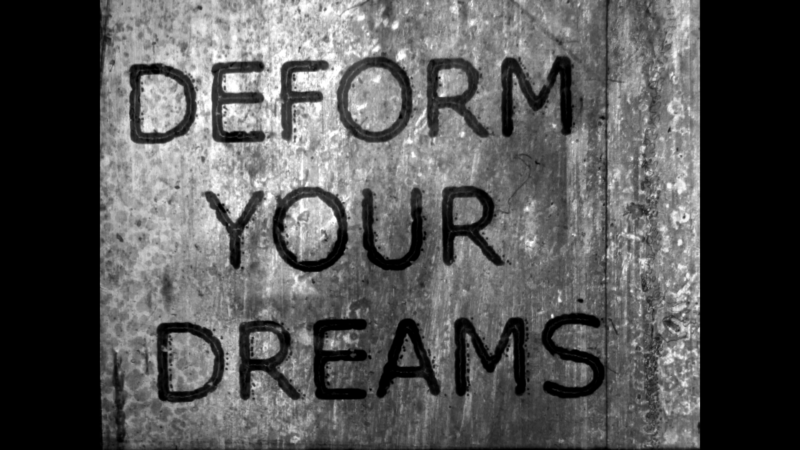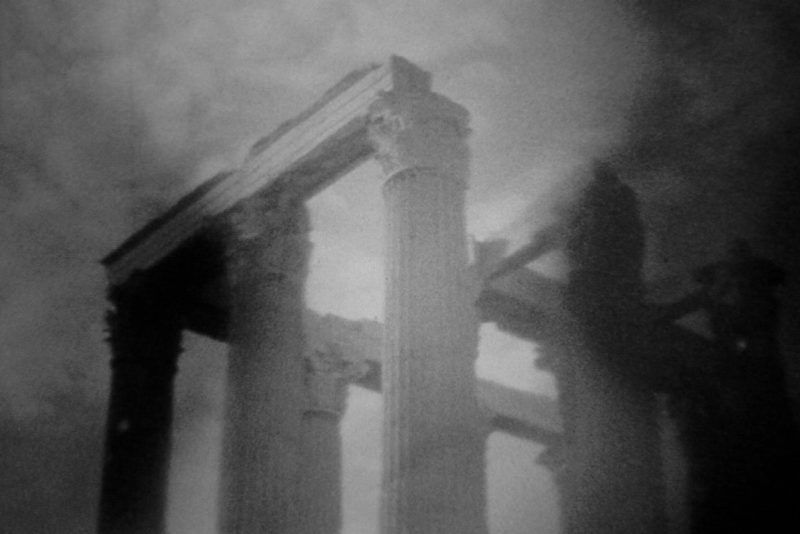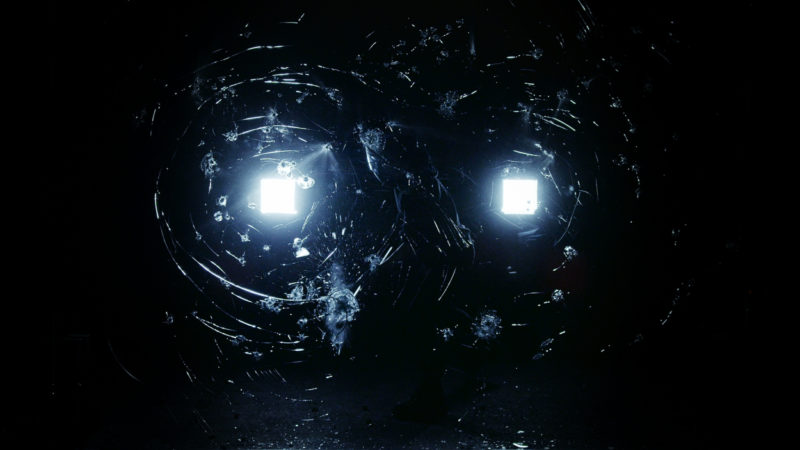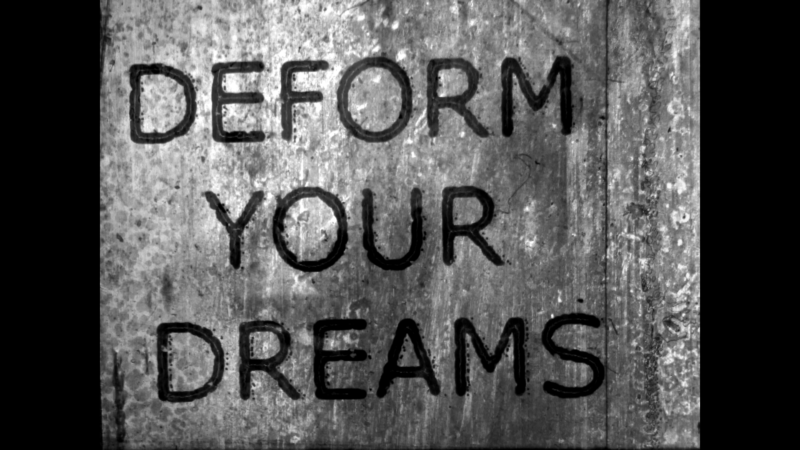KRAAK FESTIVAL 2019 Screening Programme: Spatialised latency (inbetween the acts)

Film screenings will take place on Saturday 2 March in Gouden Zaal, Beursschouwburg.
Curated by Nathalie Papillon.
Synopsis of shorts by order of appearance:
Hal Hartley - The other also, 1997, 7:22min, USA, digital version
A slow, meditative piece of visual music commissioned by Foundation Cartier for their group show, ‘Amours’. Elina Löwensohn and Miho Nikaido constantly fading in a slow-motion drops of bokeh.
Hartley created the soundtrack with his Yamaha music workstation, a piano sound going through a Zoom FX unit. Often In his works there’s a choreography hidden, in a little dance moves. Here he was fascinated by a movement in a shot he made down around the Wall Street Ny, somewhere in the end of the 90’s. A sort of interrupted gesture turned into a loop of movement. Gesture of intimacy, a turning away, and then a return.
With a powerful light source behind, the actresses seems as “stick-figure aliens”..
“We went out back to the fire escape, where I had done some test pictures the day before, and Miho and Elina performed this very slow, fluid, kind of Menuet – a looped series of movements.”
Hartley in an interview with Kenneth Kaleta from 2005.

Ieva Balode - Equal tense, 2018, 7min, Latvia, digitized 16 mm and super 8 Shot in Latvia, Greece and Ireland. The film exposes ‘Akademia’, a community and a school back in 1911. An institution that promotes healthy living while functions as a shelter for refugees and immigrants, as Aia Bertran herself, an expatriate dancer from Latvia. Reflecting on the idea of cross-sexual, engaging artist's communities which strives to find equality within artistic and philosophical gestures. The sound design made from tape recordings and Tibetian bowls, some bells, string instrument, the voice is from poems of Raymond Duncan with some slight decays. The film was presented last year in the exhibition dedicated to ‘Akademia’ in Villa Vassilieff, Paris.

Antonin De Bemels - Scrub solo 3: soliloquy, 2000, 17:40min, Belgium, digitized Super 8 Part of video-dance series with Bud Blumenthal. A ray of light marks out the contours of a body, with its broken phrases of infinite modalities. It’s an analysis of the rhythmic-plastic malfunctioning of the body. The disposition based on the dancer gestures, who correspond to the sound clicks of the super8 camera shutter. The sound design is composed with meticulous listening to seconds off sounds and real-time audio glitches from the actual editing process. Soundtrack is mixed with metallic and robotic levels in conjunction with the disjointed movements. As the freezes in a permanent flux.

Herwig Weisser - Haus der Regierung, 2018, 11min, Russia/Austria, digital version In a luxury Stalinist residential complex in Moscow from the 1930, A shadowy figure(s) moves through spaces, on bright threads as a huge network. The vibration captures the whole ambiance, in stop-motion and light- changed non-movements. The filmmaker works in the field of sculptural film installation. This "time sculpture" film was shots with obsessive freneticism that scroll through a house from the spatial to the temporal. By resonances with light rays through a net threads, maybe we ourselves are tight in the web, watching this film? All this while some governments will build not only fences and walls, but once again massive houses that cause trembling.

Peter Kutin and Florian Kindlinger -The fifth wall, 2017, 12min, Austria, digital version Exploring the experience of replacing the cinema-screen through a bulletproof glass pane (originally measured 3x2m). The use of extreme physical forces against this wall-of-glass to tranduce it to be audible. The sound design is filled with impacts that evokes cracks, splinters of sonic emissions through the broken material itself. As if this wall is situated between the audience and the camera, as a cinematic metaphor for a society intrinsically linked to the screen. In times of fragmentation and acceleration, side products of the so called digital revolution becoming tilted. We live more and more through abstraction. (Originally documentation of an installation, with 5,1 spatio enviornment.)

Johannes Gierlinger - Broken time, 2011, 1min, Austria, digitized 16 mm blow up to 35 mm "Deform Your Dreams" as a riff on the cut up films of the beats, mixing dismembered pieces of footage with text and manipulated celluloid. Because something is eliminated, scratched and lovely caressed. It’s a live-action footage with a near flawless sense of balance. Perhaps the velvet glove is the connecting through time. Sound design made by thousands of layers with economical filters.

Laura Kraning - Meridian plain, 2016, 18min, Buffalo, found-footage, digital version Compiling digital artifacts that resulted from faulty transmissions, this film stitch together archive pieces from NASA, visual and audio. The spatial disorientation inherent in these accidental shots. The director treat with attention and care to the fact that there’s no actual sound recordings ever made on Mars. The sound sources derive from online archives, the predominant sound being the NASA rovers’ accelerometer data, which measures the vibrations as the machines traverse both flat and rocky terrain. The dust storm sequence appears to be as a typical time-lapse, perhaps NASA was seeking to document atmospheric manifestation in motion? Additional sounds include field recordings of an Aeolian harp playing the wind in the Atacama Desert and a contact microphone beneath the sand during a sandstorm.
Khristine Gillard - EAU VIVE, 2015, 8:50min, Belgium, digitized super 8mm Triggered by the notion of latency, the hidden, existing in a non apparent way but which could arise anytime. It’s about disappearing, in the smoked steam or physically in the darkroom. It plays with the connection between the arising of a natural phenomenon and the revealing process of silver film (as a photosensitive and chemical event). It is the echo of a conversation about an insatiable cinema attempt: to be synced with a landscape's internal rhythm. Questionning the attempt to touch the possible impossibility of catching inconceivable sound from a far. At the edge of the audible, where the camera positioned in stasis, perhaps the ‘sweet spot’ of the volcano.
